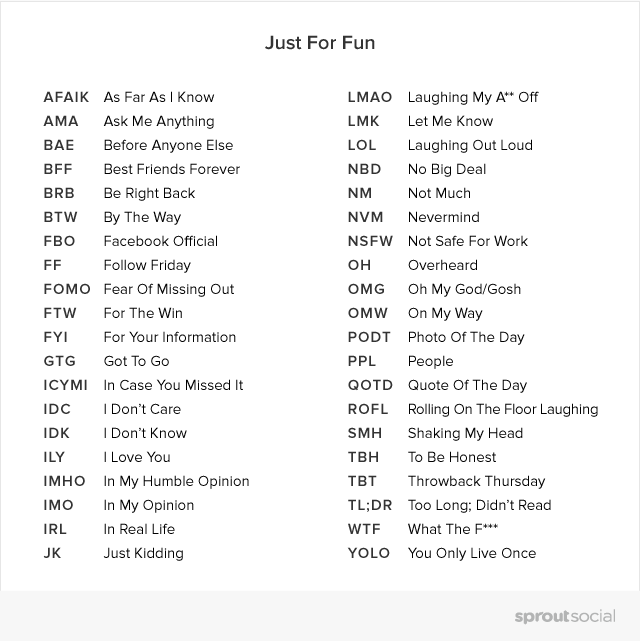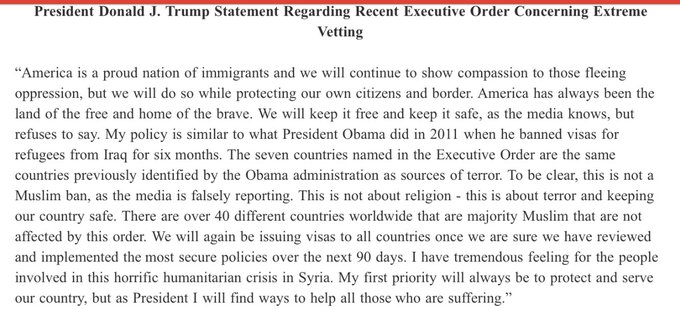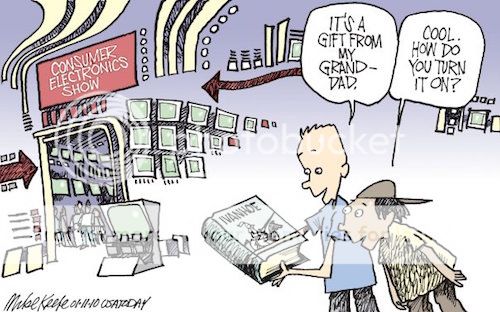It feels like every month a social network unveils a new social media advertising tool. Facebook, Twitter, and LinkedIn have long planted their flags in this territory, while Instagram, Pinterest, and Snapchat are quickly gaining ground. This explosion in advertising options has left a lot of brands trying hard to play catch-up.
If you’re still not sure why you should put money behind your social media campaigns, we’ve gathered a long list of social media advertising stats that should help motivate you.
Social media advertising usage statistics
Social media advertising budgets have doubled worldwide over the past 2 years—going from $16 billion U.S. in 2014 to $31 billion in 2016
But despite this growing investment in social advertising, 46 percent of B2B marketers say they’re unsure whether their channels have generated any revenue for their business.
Social media spending in the U.S. alone is expected increase to $17.34 billion in 2019
That’s no small number. Marketers have recognized that social media advertising is a tool that they’re going to need to understand and use if they’re going to succeed at reaching coveted social media users moving forward.
This statistic shows that they’re making a commitment to doing just that.
Social media advertising isn’t only a North American phenomenon either…
In 2017, analysts predicted a 26.3% global increase on spending for social media ads
Of course North Americans are heavy users of social media, but so are people in South America, Europe, Asia, Africa… you get my point. Social media is being used everywhere, and social media advertising is growing globally. Regardless of your market, you can find ways to make social advertising work for you. This far reach is probably the reason that…
Social media ad spending is likely to exceed $35 billion in 2017, representing 16 percent of all digital ad spending globally
The actual number is $35.98 billion if you want to get technical. That represents an increase of almost $13 billion in just two years. Not only that, it means that social media will have maintained consistent growth (of about $6 billion every year) for nearly half a decade. Often these trends rise rapidly for a year or two and plateau. If social media advertising spend continues on this curve, there’s no telling how the industry and tools will evolve.
But that kind of spending must reflect just how expensive the ads themselves are, right? Well, actually…Over 50 percent of B2B marketers rank social media as a ‘very’ or ‘somewhat’ low cost ad option
A survey asked 200 B2B marketers to rate the cost of demand generation channels based on the cost per lead. Just over 50 percent of the respondents ranked social media as “very low cost” or “somewhat low cost.”
This compares to 42.5 percent for search ads, and 41.7 percent for display ads. The truth is, social media ads are generally quite affordable. Many networks offer you the opportunity to test your content organically before promoting it, so you know you’re giving yourself the best opportunity to connect with your target audience. Plus, there are countless other ways to keep the cost of your social advertising low.
Social media advertising stats by network
Twitter advertising revenue totaled $545 million in Q3 of 2016, an increase of 60% year-over-year
Twitter’s earnings report laid it out clearly on the table: more people are turning to Twitter ads than ever before.
Twitter was one of the first networks to recognize and capitalize on the potential of social media advertising. In the years since they launched their first ad options, adoption has grown rapidly and steadily. With 60 percent growth year-over-year, there’s little doubt that Twitter ads have proven their worth as an effective option for businesses.
That may have a little something to do with Twitter’s great focus on mobile…
Mobile advertising revenue accounted for 86% of total Twitter advertising revenue
The future of technology lives in your pocket. People use smartphones so much today that every business is scrambling to optimize for mobile. Twitter has always been ahead of the game in terms of their mobile app development, and the same is true of their mobile advertising opportunities. It’s quite clear from this stat that mobile is where advertisers want to be, and that Twitter has managed to get them there.
So how do these revenue numbers translate into usage? Well…By June of 2014, nearly 80% of U.S. marketers were using promoted Tweets
Yes the stat is old, but that’s the point. By June of 2014, nearly 80 percent of U.S. marketers were using promoted Tweets. That figure shows the rapid adoption of Twitter ads, but it’s also safe to assume that the number will have increased since then, especially as Twitter expanded its advertising platform.
When more than 80 percent of marketers are using a specific tool, you have to believe that they’re garnering some value from doing so. And if you were to look at the data, it would seem to back up this theory.
In 2016, total Promoted Tweet engagements were up 91% year-over-year—much higher than traditional banner ads
Simply put, Twitter ads drive engagement. They’re targeting options allow you to connect with a very specific audience and provide them with content you’ve tested and know that they are interested in. This all translates into more engagement and more benefits to your business.
While Twitter is one of the social media advertising pioneers, there’s a younger player in the game…
Instagram will bring in $1.53 billion in mobile ad revenue worldwide this year
Instagram ads are not to be underestimated. The social network started partnering up with big brands to test their advertising early in 2015, and the results turned heads.
In their first year of existence, Instagram ads pulled in an impressive $595 million. And, in 2016 that number has doubled. Those are incredible figures. And income is only one measurement. The other is eyes on the screen…
Instagram has over 500 million active monthly users—almost all of whom are under 35
As a mobile-first social network, Instagram is placed perfectly to capitalize mobile’s growth into the main vehicle of social network usage. Instagram is also most widely used by the next generation of buyers—90 percent of users are under 35. With Instagram ads, brands will be able to connect with consumers where they are—on mobile—and make an impression right now on young users whose incomes and spending will only increase year after year.
Finally, Instagram ads fit seamlessly into the native browsing experience. In other words, Instagram is an advertisers dream. Still, Instagram ads are a new tool, and haven’t really proven themselves in the long term.
But people are remembering them…Ad recall from sponsored posts on Instagram was 2.9x higher than Nielsen’s norms for online advertising
By the third quarter of 2016, Facebook brought in $6.8 billion in advertising revenue, up from $4.3 billion the year before
Instagram’s estimated $1.53 billion in ad revenue this year is impressive, but let’s not forget who bought whom. Facebook reported a remarkable $6.8 billion in advertising revenue this year. The figure grew by more than a billion dollars year-over-year—think about what that means for Facebook’s annual ad revenue.
The fact is, Facebook is the biggest social network in the world and, because of its widespread usage, many brands are more comfortable experimenting with ads on Facebook than anywhere else. Plus, it has a proven track record when it comes to social media advertising.
On Facebook, desktop ads have 8.1x higher click-through rates and mobile ads have 9.1x higher click-through rates than normal web ads
Think about that. Facebook joined the advertising game long after display ads and search ads had established themselves as a tool for businesses. In a very short amount of time, the social network was able to create ads that are far less obtrusive and far more effective than their counterparts. Between eight and nine percent higher click through rates should be enough to get you on board with Facebook ads. But this stat doesn’t even bring up the fact that Facebook ads (and, as mentioned above, social media ads in general) are often cheaper than other online alternatives.
Facebook’s impressive ad revenue growth can also be attributed to another factor, namely their increasing role as a leader in social video.
Learn more about Facebook ads in our beginner’s guide to advertising on Facebook.
Over 70% percent of marketers plan to increase their use of video ads next year
This stat, from a report by Mixpo, really shows that Facebook has become the platform of choice for video advertisers. Advertisers and agencies are clearly putting their trust in Facebook for all ad types, even those where Facebook is only now starting to gain a foothold.
If you look at the chart, Facebook clearly played second fiddle when it comes to video advertising in the last year. But it has quickly surpassed the video powerhouse that is
Instagram’s estimated $1.53 billion in ad revenue this year is impressive, but let’s not forget who bought whom. Facebook reported a remarkable $6.8 billion in advertising revenue this year. The figure grew by more than a billion dollars year-over-year—think about what that means for Facebook’s annual ad revenue.
The fact is, Facebook is the biggest social network in the world and, because of its widespread usage, many brands are more comfortable experimenting with ads on Facebook than anywhere else. Plus, it has a proven track record when it comes to social media advertising.
On Facebook, desktop ads have 8.1x higher click-through rates and mobile ads have 9.1x higher click-through rates than normal web ads
Think about that. Facebook joined the advertising game long after display ads and search ads had established themselves as a tool for businesses. In a very short amount of time, the social network was able to create ads that are far less obtrusive and far more effective than their counterparts. Between eight and nine percent higher click through rates should be enough to get you on board with Facebook ads. But this stat doesn’t even bring up the fact that Facebook ads (and, as mentioned above, social media ads in general) are often cheaper than other online alternatives.
Facebook’s impressive ad revenue growth can also be attributed to another factor, namely their increasing role as a leader in social video.
Learn more about Facebook ads in our beginner’s guide to advertising on Facebook.
Over 70% percent of marketers plan to increase their use of video ads next year
This stat, from a report by Mixpo, really shows that Facebook has become the platform of choice for video advertisers. Advertisers and agencies are clearly putting their trust in Facebook for all ad types, even those where Facebook is only now starting to gain a foothold.
If you look at the chart, Facebook clearly played second fiddle when it comes to video advertising in the last year. But it has quickly surpassed the video powerhouse that is
YouTube
YouTube in terms of advertising interest.
That’s no small feat considering…
The number of YouTube channels earning 6 figures per year is up 50% year-over-year
This is an important sign for the video network. Despite all of Facebook’s gains, those who advertise on YouTube continue to increase their spend. One would imagine that this means the ads are working, and working well.
Well enough, at least, to support an increasingly diverse array of content creators.
And who are these advertisers?
100% of the top 100 global brands have run YouTube ads in the past year
YouTube has serious respect amongst big brands. While Facebook is becoming the video advertising tool for every business, YouTube is still maintaining—and as we saw above, actually increasing—powerful relationships with the biggest brands in the world.
Snapchat
While we’re on the topic of big brands…
Snapchat’s Sponsored Selfie Filters, which could cost up to $750,000 per day, are forecasted to reach 16 million viewers daily
Snapchat has a bit of a history of charging the big bucks for ads, and it seems to be working well for them. CEO Evan Spiegel and his team have forecasted that Sponsored Selfie Filters, which essentially allow users to turn their selfies into ads, will reach up to 16 million viewers a day. With the cost of these ads maxing out at $750,000 per day, you can bet Snapchat is turning to the biggest brands in the world, or at least those with huge social media advertising budgets.
Pinterest
That’s no small feat considering…
The number of YouTube channels earning 6 figures per year is up 50% year-over-year
This is an important sign for the video network. Despite all of Facebook’s gains, those who advertise on YouTube continue to increase their spend. One would imagine that this means the ads are working, and working well.
Well enough, at least, to support an increasingly diverse array of content creators.
And who are these advertisers?
100% of the top 100 global brands have run YouTube ads in the past year
YouTube has serious respect amongst big brands. While Facebook is becoming the video advertising tool for every business, YouTube is still maintaining—and as we saw above, actually increasing—powerful relationships with the biggest brands in the world.
Snapchat
While we’re on the topic of big brands…
Snapchat’s Sponsored Selfie Filters, which could cost up to $750,000 per day, are forecasted to reach 16 million viewers daily
Snapchat has a bit of a history of charging the big bucks for ads, and it seems to be working well for them. CEO Evan Spiegel and his team have forecasted that Sponsored Selfie Filters, which essentially allow users to turn their selfies into ads, will reach up to 16 million viewers a day. With the cost of these ads maxing out at $750,000 per day, you can bet Snapchat is turning to the biggest brands in the world, or at least those with huge social media advertising budgets.
And Snapchat is not the only newcomer to social media advertising. Pinterest has been around for a while, but it’s growing super fast. Although Instagram sees twice as many eyes as Pinterest daily, this social bookmarking platform is rife with inspired people who are looking to purchase. How many?
150 million people use Pinterest every month
That number is impressive, especially given that last year it was a third less. A jump of 50 percent in 12 months indicates something happening on the platform that all companies—small businesses and behemoth brands alike—can pay attention to. Even if you’re not a Pinterest aficionado, they’re making it easy for marketers to promote using the platform. Like Facebook, they’ve streamlined the process. It takes nine short seconds to go from viewing a Pin to promoting it.
That nine seconds sits between advertisers and 150 million fresh-faced creative users, 93 percent of whom have shopped online in the last month. Whether users are using social media as a wishlist or a shopping cart, studies have shown that they are actively browsing. This could be the reason that Pins with prices on them get 36 percent more likes than those without. And price doesn’t stop people from buying—the average order on Pinterest is $50—higher than any other social media platform.



 Frank Luntz
Frank Luntz  Norm Eisen @NormEisen
Norm Eisen @NormEisen
 Zeke Miller
Zeke Miller 